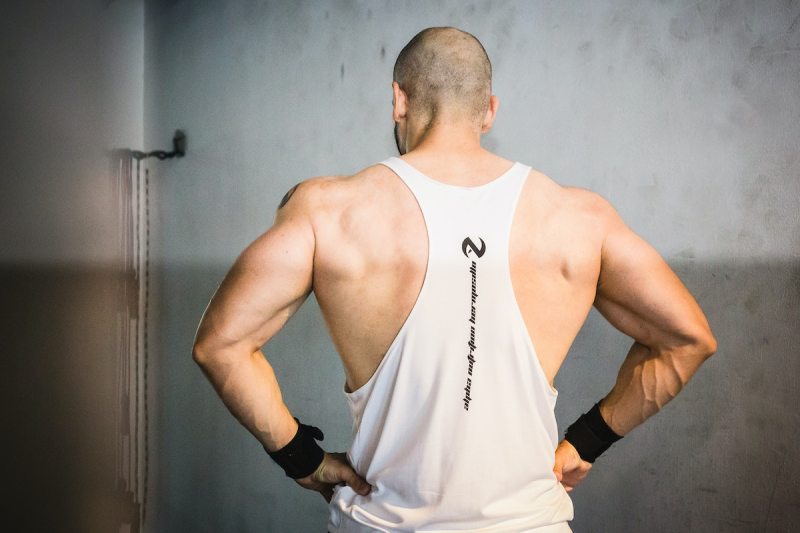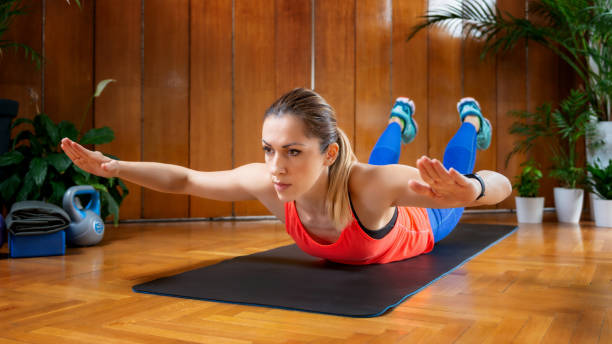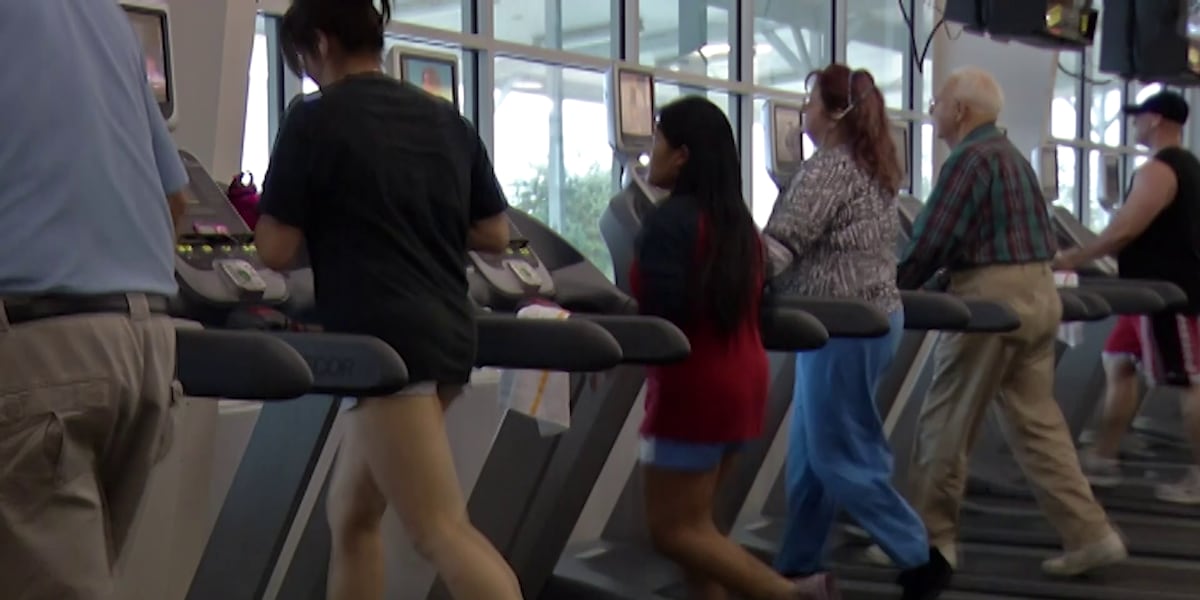Fitness
A stronger back without lifting weights? Sold

So many of us experience fitness plateaus or slumps that may be hard to recover from. It’s almost impossible to put up strong defenses and avoid decreasing physical abilities when we’re going through an endless cycle of stationary jobs or sitting at a desk day in and day out. Engaging in bodyweight back exercises may help to support your entire body as you sit during the day.
Back exercises will contribute to your upper and lower body strength, thus allowing you to maintain good posture and avoid developing back pain. These exercises are convenient and feasible because instead of using equipment, you can use your body weight for resistance.
As you go forward with bodyweight exercises, it’ll be important to balance the intensity of workouts, as well as safely warming up and cooling down, because this will enhance your flexibility and the ability to sustain these kinds of workouts.

Can you strengthen your back with no equipment?
Have no fear because you will be able to build strength, even if you exercise without using any equipment. Even if it doesn’t equal the results generated with equipment to a tee, you can make great strides just by using your body weight for resistance.
Bodyweight exercises, also known as calisthenics, entail the use of gravity as the resistance you’re working with rather than equipment. We consider that you may reach a limit for your gains because of gravity and the way this prevents resistance from increasing. However, you’ll still achieve bolstered flexibility and mobility that can encourage muscle gains.
You can build up strength with this type of regimen because you can target many muscle groups. This is why a workout like pull-ups is essential. The back is targeted and strengthened, along with the biceps and shoulders, which can ultimately maximize your overall upper body strength.

Benefits of having a strong back
Skeletal support system
It’s easy for us to take our backs for granted, but it is the most crucial part of the skeleton, quite literally the backbone, so to speak. You need a strong back to maintain an upright posture, which is essential in supporting the diaphragm and the way you breathe. We don’t think of it, but our posture contributes to the way our lungs fill with air, which contributes to breath control and how well or poorly we conduct this.
Additionally, our back acts as an enclosure for the central nervous system. This is crucial for connectivity to the brain and the signaling that occurs throughout the body. Often, when there is back pain, you’ll see that neuroinflammation and nerve sensitivities are present, which can cause certain conditions to deteriorate if communication between neurons and nerve endings isn’t corrected.
Balance and mobility
Strong back muscles, like the lats, are responsible for many movements that engage your upper body and your trunk. This includes simply pulling an object downward and bringing balance to the upper and lower body. The lats are the largest muscles in the back, and not only do they have the task of keeping the spine stabilized, but they also work in the extension and rotation of your arms and shoulders.
A strong back can balance the weight of your head and neck compared to your lower body. This can harness fluidity and agility in your moves because these aspects of your body will work in concert together without one system doing most of the work. Your long runs and swims will be maintained by strong upper and lower limbs, as well as great breath control, and you’ll recover from the activities without any pain.
Weight-bearing and functionality
The balance and structure that we discussed earlier come in handy when we consider weight-bearing capabilities. When we’re carrying heavy bags or lifting a toddler, it’s our back that carries the load. The stronger your back is, the better you can carry the load, and you won’t have to worry about neck pain, cramping, or getting stiff while sitting at your desk.
Due to our back serving as an anchor for our posture, it can direct the extension and rotation of our arms and influence our movements. This allows us to run with adequate knee function and execute proper swimming techniques.
Remember, it’s not just about upper body strength because lower back strength can accompany strong legs and gluteal muscles, which allows you to bend down and squat.

4 essential bodyweight back exercises
1. Supermans
Doing the Superman is a great way to work the back extensors, as well as the shoulders. Exercising these extensors can give you the support you need to defend against vertebral fractures, as well as osteoporosis and declined posture.
Instructions:
- To begin, lay down on your stomach and stretch your arms out overhead. This will resemble Superman’s “flying” stance with your arms straight out in front.
- Next, raise your arms slowly, lifting the rest of your upper body, like your head and chest, at the same time off the floor.
- As you raise the upper limbs, you’ll lift your legs simultaneously. In doing this, you’ll activate the back muscles and glutes.
- Keep your core tight as you maintain this position for several seconds, allowing yourself to hover above the floor.
- Return to your flat starting position, and then complete 15 reps.
2. Inverted rows
If you’re aiming to accentuate not only your back but also your biceps and core, inverted rows will be perfect for you. If you don’t have a bar or a set of barbells, all you need is the stability of a sturdy table.
Instructions:
- Find a bar or sturdy tabletop. Lay on the floor below it so the bar or edge is in line with your shoulders.
- Grip the bar or edge evenly with both hands shoulder-width apart.
- Keep your body in a straight line and your heels pressed into the floor as you bend your elbows and pull your chest up to the bar or edge.
- Slowly lengthen out your arms to return to the starting position before repeating.
- Aim for 8 to 10 reps.
3. Pull-ups
Another great workout to build up your back and upper body strength is the classic pull-ups. Pull-ups are one of the best back-focused exercises and are beneficial for optimizing balance and functionality, as well as providing a safeguard from injuries.
Instructions:
- Start by hanging from a bar with your hands at a shoulder-width distance. Your palms should be facing outward.
- Keeping your chest up and shoulders back, bend your elbows, and bring your chin up to the bar.
- Slowly release back to the starting position before repeating for 10 to 15 reps.
4. Rear delt raise plank
Working on your shoulder muscles, like the delts, is important for back strength, as this contributes to rotation and extension that doesn’t put a strain on the back when done adequately.
Using plank variations is imperative to musculoskeletal health because planks provide support and stability to your entire core, which is useful for upper and lower body movements. It would be wise to make good use of planks because this exercise can help prevent back pain and injuries, as well as improve posture.
Instructions:
- Start by positioning yourself in a high push-up stance. Be sure that your shoulders and elbows line up with each other, with your elbows directly below the shoulders.
- Raise your arm upward and outward, squeezing your delts as you do it. Keep your other palm on the floor to balance yourself. While doing this, engage your abs and glutes by squeezing them, and this will create the tension you need from your body weight.
- Your body should remain straight, with your lower limbs in line with your upper body and your toes maintained on the ground.
- After working the starting arm for your desired number of reps, lower it back down to the initial position. Follow up by working the other arm.
Editors’ Recommendations

Fitness
Can a

Exercising regularly is important for preventing dementia. But if it’s hard to rack up the recommended amount of activity during the five-day work week (150 minutes of moderate-intensity activity, like brisk walking, or 75 minutes of vigorous activity, like swimming), consider the “weekend warrior” approach — fitting it all into one or two weekly sessions. The approach might offer the same brain health benefits, according to a study published online Oct. 29, 2024, by the British Journal of Sports Medicine. Researchers analyzed the health and self-reported activity information of more than 10,000 dementia-free people in Mexico who were followed for about 16 years. After accounting for factors that could influence the results, such as lifestyle habits, scientists found that weekend warriors were 13% less likely to develop mild cognitive impairment (MCI), a precursor to dementia, compared with people who didn’t exercise — about the same benefit seen in those who exercised during the work week. While the study was observational and can’t prove cause and effect, it supports the idea that even less frequent exercise might help protect brain health, and it might be a more convenient option for busy people.
Image: © Luis Alvarez/Getty Images
As a service to our readers, Harvard Health Publishing provides access to our library of archived content. Please note the date of last review or update on all articles.
No content on this site, regardless of date, should ever be used as a substitute for direct medical advice from your doctor or other qualified clinician.
Fitness
Fitness face-off – Harvard Health

What’s in style? The question doesn’t just relate to fashion. Indeed, even exercise styles go in and out of vogue, echoing trends fueled by social media and other cultural drivers.
Case in point: high-intensity bursts of exercise have grabbed headlines over the past couple of years, with scientists generating an array of studies examining the health benefits of short spurts of movement lasting from one to three minutes. That might consist of jumping jacks, lunges, running in place, jumping rope, air boxing, running up stairs, or any other high-intensity activity.
Meanwhile, plenty of research continues to focus on the health advantages of moderate-intensity, continuous movement. Mainstay choices for these sessions include brisk walking, cycling, jogging, and elliptical and treadmill use.
Given the swings in popularity between the differently paced alternatives, perhaps the most pressing question is which one is better for us. It might seem certain exercise patterns might prove superior to others, but we should resist the temptation to believe that, says Dr. Meagan Wasfy, a sports cardiologist at Harvard-affiliated Massachusetts General Hospital.
“There are always trends, and each one claims to be the latest and best way to move your body,” Dr. Wasfy says.
Breaking down the data
What health benefits does each approach offer? A sampling of recent studies and official health guidance weighs in.
Evidence supporting exercise bursts includes the following:
- A 2022 analysis of data collected on more than 25,200 people who didn’t otherwise exercise (average age 62, 56% women) published in Nature Medicine found that those who routinely did brief bursts of vigorous activity — defined as three bouts, each lasting a minute or two — had significantly lower odds of dying or developing cardiovascular disease over the following seven years than participants who didn’t.
- A 2023 analysis in JAMA Oncology of more than 22,000 people who didn’t exercise (average age 62, 55% women) suggested that even short, intermittent periods of intense movement — a minute at a time, three or four times a day — was linked with 18% lower cancer risk over the following 6.7 years, especially for cancers of the breast, uterus, or colon.
Evidence supporting longer, moderate-intensity exercise includes the following:
- Adults who do any amount of moderate-to-vigorous exercise derive health benefits, including reducing their risks of cardiovascular disease, diabetes, and some forms of cancer, according to the CDC.
- A 2022 analysis in JAMA Internal Medicine involving 78,000 people (average age 61, 55% women) found their risk of heart disease, cancer, and premature death dropped by 10% over the following seven years for every 2,000 steps they logged each day, with the benefit peaking at 10,000 steps.
Sense a theme from the findings? Regardless of intensity, it’s apparent that any movement is good for your health.
“No one comes out ahead with regards to the long-term outcomes,” Dr. Wasfy says. “What matters most is moving your body and doing more of it. The sum of movement, over the course of a year or decades of your life, is what matters.”
Exercise caveats
One clear advantage to exercise bursts — or its cousin, high-intensity interval training (HIIT) — is that any high-intensity activity enables you to fulfill recommended exercise guidelines in less time. Health organizations advise adults to get at least 150 minutes of moderate exercise or 75 minutes of vigorous exercise (or some equivalent combination of the two) per week. For an HIIT workout, you alternate vigorous, short sprints with brief periods of rest or lower-intensity movement.
“It’s a time-efficient way to get your recommended exercise dose in less time,” Dr. Wasfy says.
High-intensity exercise does pose a few drawbacks, however. These include a greater risk of injuries and inflammation to joints and muscles. Additionally, for people with heart disease or its risk factors, sudden bursts of exercise could be more likely to bring on new cardiac symptoms.
“If you’re writing an exercise prescription not knowing anything about someone’s health history, you’d write it for moderate-intensity, continuous exercise,” Dr. Wasfy says.
If you’d like to increase your exercise intensity but have existing heart disease — or symptoms such as chest pain with vigorous movement — talk to your doctor in advance. Older adults who’ve noticed their ability to exercise has declined should also speak up.
Ultimately, Dr. Wasfy says, you should choose a style of exercise you really like — and will do consistently — and disregard fitness trends. “If you’re healthy,” she says, “it’s really your choice.”
Image: © Luis Alvarez/Getty Images
Fitness
Amitabh Bachchan’s diet and workout routine for staying fit at 82: Pranayam, yoga stretches, gooseberry juice and more

Amitabh Bachchan is a living legend whose popularity surpasses that of his contemporaries. At 82, his unmatched energy and commitment to fitness continue to inspire generations. Despite facing severe health challenges like tuberculosis, his disciplined lifestyle has helped him stand tall and active in the industry. Curious to know the secret behind his fitness? Let’s dive into the insights of Amitabh Bachchan’s diet plan and workout routine. (Also read: Sonu Sood shares his diet and fitness secrets for toned body at 51: ‘I’ve never tasted non-veg and I don’t drink’ )
How Amitabh Bachchan stays fit at 82
Earlier, in an interview with Humans of Bombay, Amitabh Bachchan’s wellness trainer Vrindaa Mehta revealed the actor’s unwavering dedication to fitness. She shared, “If Amitabh Bachchan can make time to exercise, normal people can too. The mindset is, when you know something is good for you, you just do it. It’s not about comfort, it’s not about not having time… If Mr. Bachchan can make time to exercise, regular people can of course, take out time to exercise.”
Talking about his fitness routine, Vrindaa added, “My sessions with Amit ji are more about breath work. We start off with basic breath exercises and move on to pranayams, and basic yoga stretches. Mindset… He’s the father of it all.”
Wellness trainer Shivohaam, who also works with Amitabh, highlighted the actor’s remarkable commitment to fitness. “There are times when we have to tell him, ‘Let’s not train right now, it’s not ideal for you.’ The point is, he does take out the time, whether it’s morning, afternoon, or evening, or even between meetings because he knows it’s important,” shared Shivohaam.
Amitabh Bachchan’s diet secrets
Amitabh Bachchan’s diet revolves around discipline and variety. In one of his blog posts, the veteran actor shared that he begins his day with tulsi leaves, followed by a breakfast featuring items like protein shakes, almonds, porridge, or coconut water. Other favourites include gooseberry juice and dates, providing a power-packed start to his mornings with a mix of healthy nuts and proteins.
When discussing his eating habits, Big B revealed, “In my youth, I would eat, but now I have left eating non-veg dishes, sweet items, rice, and won’t speak any further.” Skipping desserts and limiting sugar intake have been significant lifestyle changes that help him maintain his fitness and avoid risks like obesity.
-
/cdn.vox-cdn.com/uploads/chorus_asset/file/25822586/STK169_ZUCKERBERG_MAGA_STKS491_CVIRGINIA_A.jpg)
/cdn.vox-cdn.com/uploads/chorus_asset/file/25822586/STK169_ZUCKERBERG_MAGA_STKS491_CVIRGINIA_A.jpg) Technology1 week ago
Technology1 week agoMeta is highlighting a splintering global approach to online speech
-

 Science1 week ago
Science1 week agoMetro will offer free rides in L.A. through Sunday due to fires
-
/cdn.vox-cdn.com/uploads/chorus_asset/file/23935558/acastro_STK103__01.jpg)
/cdn.vox-cdn.com/uploads/chorus_asset/file/23935558/acastro_STK103__01.jpg) Technology1 week ago
Technology1 week agoAmazon Prime will shut down its clothing try-on program
-

 News1 week ago
News1 week agoMapping the Damage From the Palisades Fire
-
/cdn.vox-cdn.com/uploads/chorus_asset/file/25826211/lorealcellbioprint.jpg)
/cdn.vox-cdn.com/uploads/chorus_asset/file/25826211/lorealcellbioprint.jpg) Technology7 days ago
Technology7 days agoL’Oréal’s new skincare gadget told me I should try retinol
-
/cdn.vox-cdn.com/uploads/chorus_asset/file/25832751/2192581677.jpg)
/cdn.vox-cdn.com/uploads/chorus_asset/file/25832751/2192581677.jpg) Technology4 days ago
Technology4 days agoSuper Bowl LIX will stream for free on Tubi
-

 Business5 days ago
Business5 days agoWhy TikTok Users Are Downloading ‘Red Note,’ the Chinese App
-
/cdn.vox-cdn.com/uploads/chorus_asset/file/25835602/Switch_DonkeyKongCountryReturnsHD_scrn_19.png)
/cdn.vox-cdn.com/uploads/chorus_asset/file/25835602/Switch_DonkeyKongCountryReturnsHD_scrn_19.png) Technology2 days ago
Technology2 days agoNintendo omits original Donkey Kong Country Returns team from the remaster’s credits

















